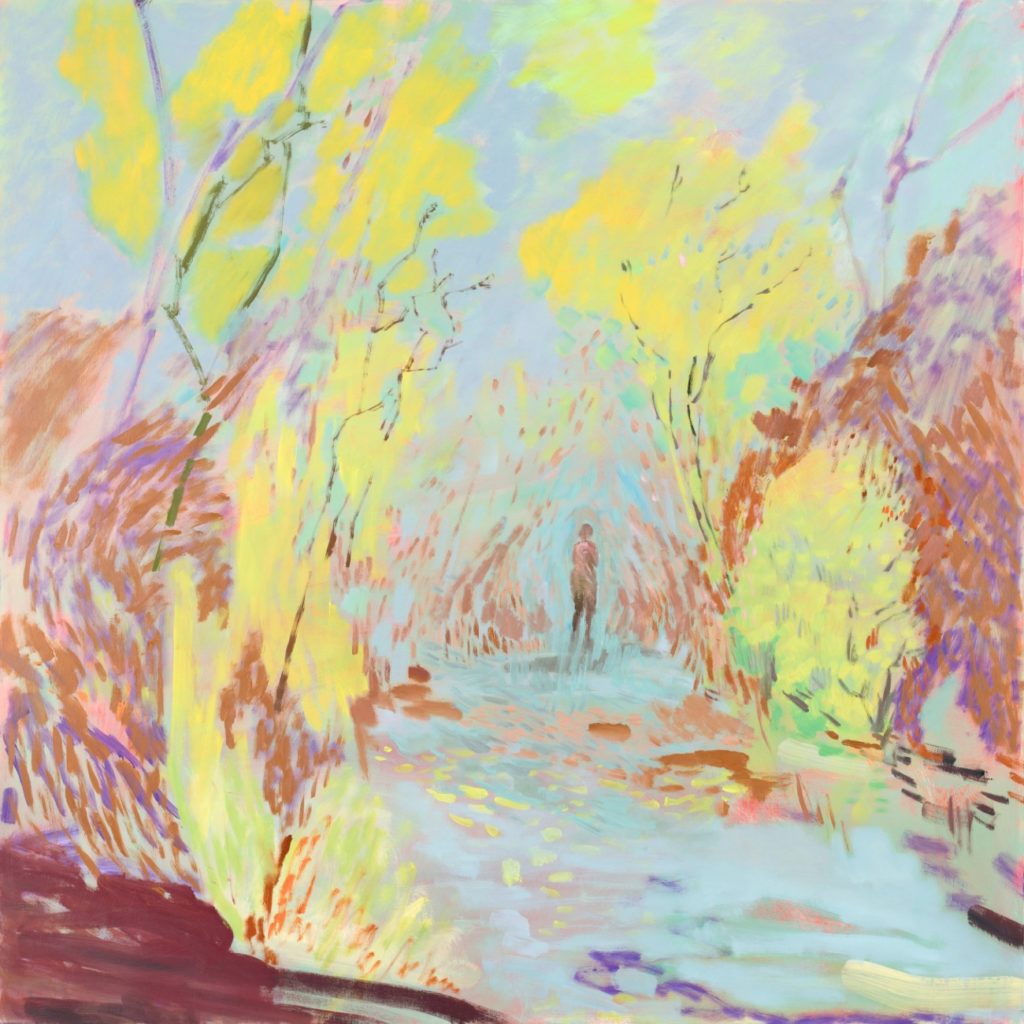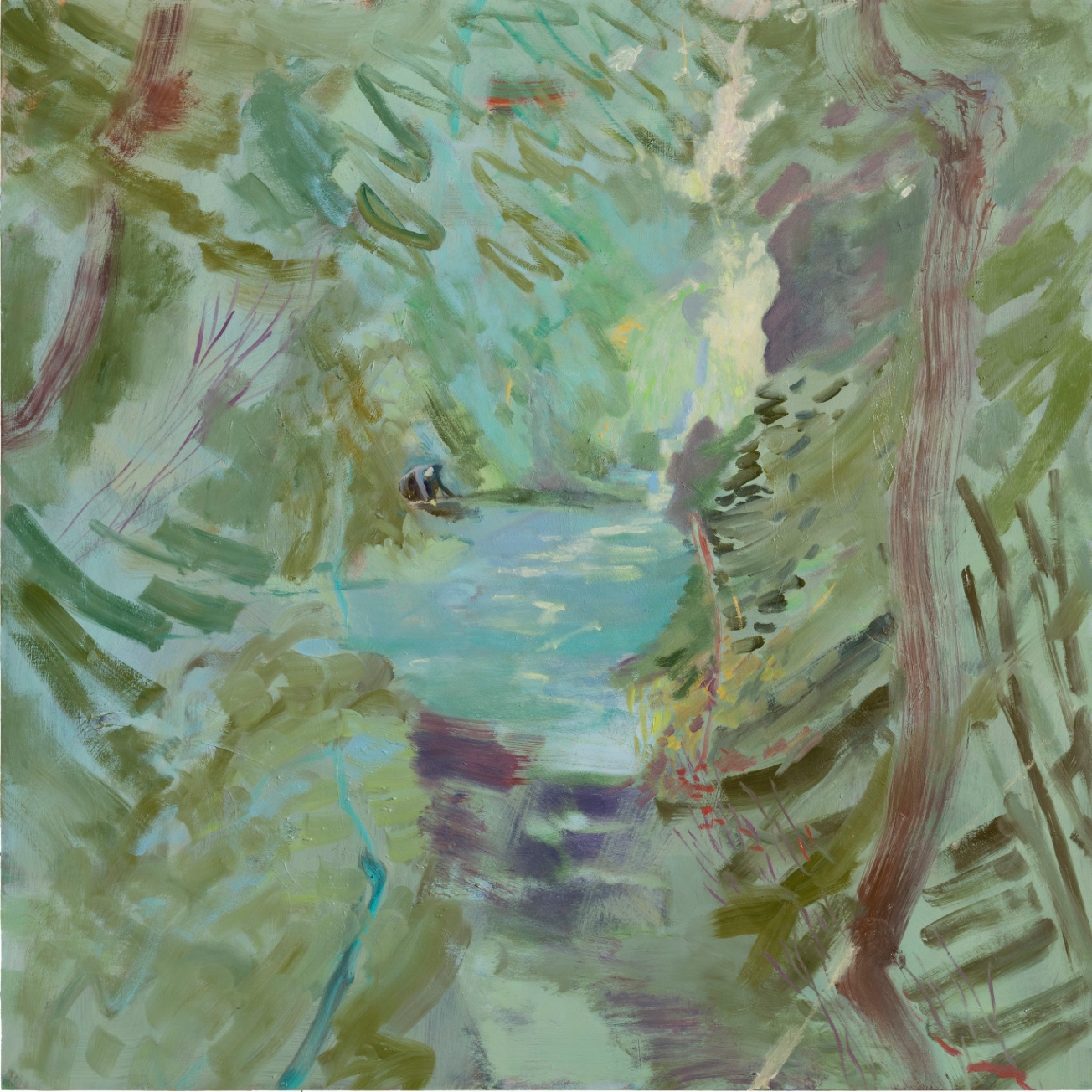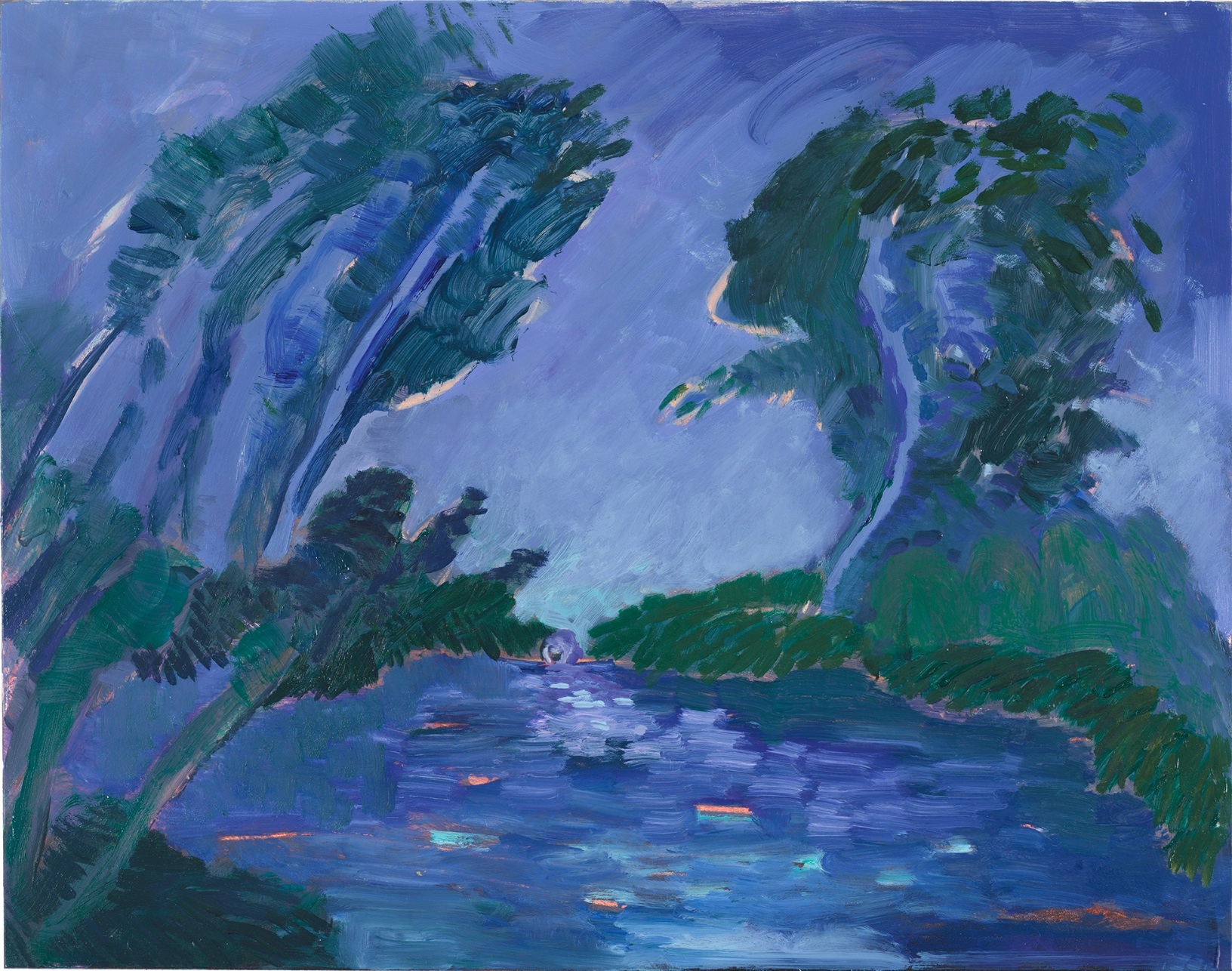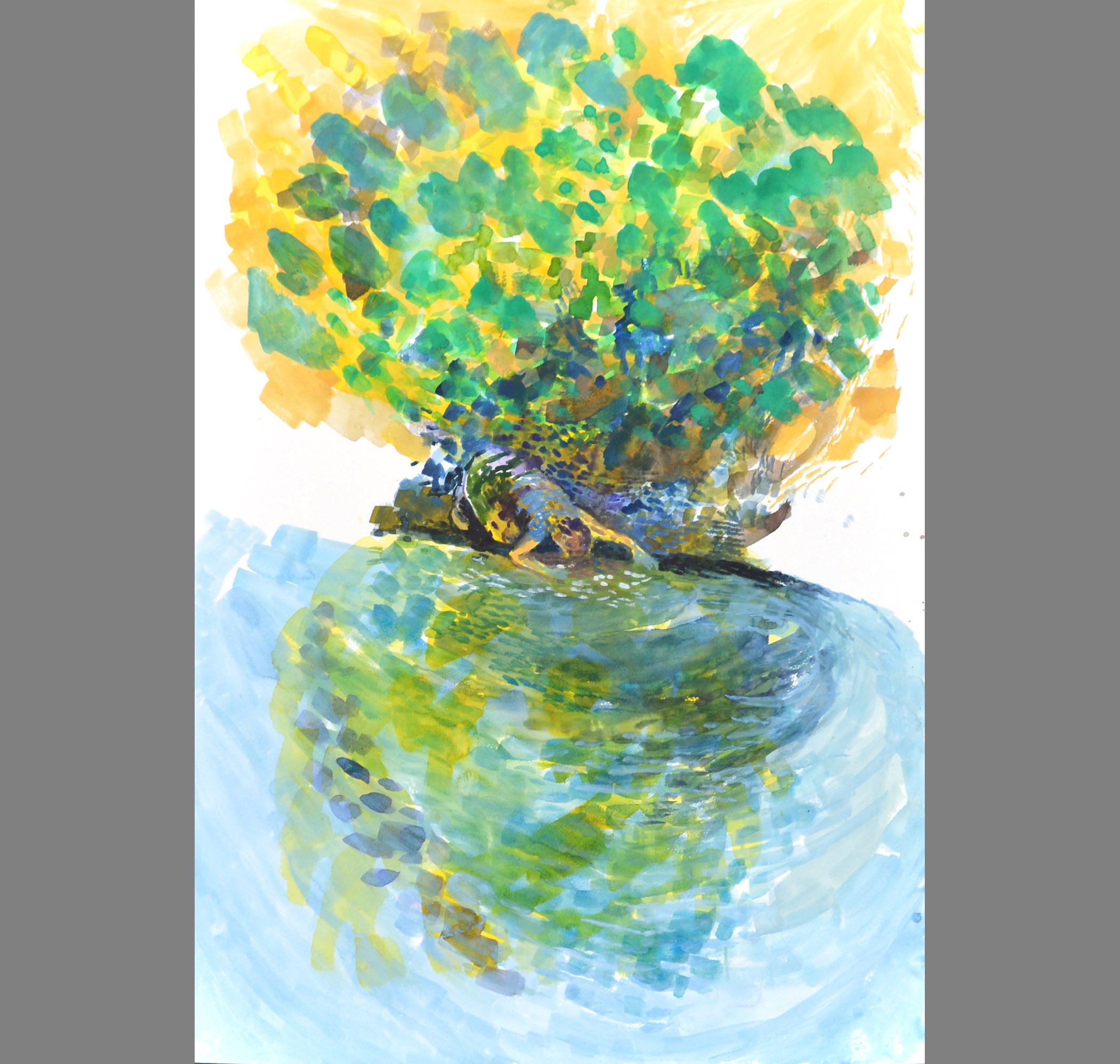
The landscapes of Chicago-based artist Anne H. Stevens make use of heightened color and looming flora to explore how women relate to nature. Here, she discusses the core tenants of her practice, why the figures in her landscapes are small (but mighty), and why the current moment demands a new take on women’s role in art history.
“Feminists from the ’70s and ’80s influenced my work—if not the style, then definitely the content. I love the breadth of work that they made about women’s experiences. I read a lot of Lucy Lippard when I was younger. The Lure of the Local influenced me when I was in graduate school. In it, she writes about artists’ work in communities across America. I was involved in the Women’s Action Coalition in the early ’90s, which merged art with activism. White women were beginning to understand their privilege and realizing that there were a lot of issues that needed to be sorted out between them and gender-fluid women and women of color before we were all going to be able to act together. At the time, I was making autobiographical drawings and paintings, but I also enjoyed engaging in the larger social issues that affected how I saw myself and how I made work. That’s a roundabout way of saying that in the paintings that I’m making now, the figures are relatively small in relation to their surroundings, because that’s how I see myself in society—just a tiny piece of a larger ecosystem.
I grew up in California and then lived in Washington State for many years, and I still often travel to the West. A lot of my drawing happens there. My ‘Narcissus’ series began in Oregon, when I was sketching by a little pond that appears in the series. I started the Narcissus paintings after Donald Trump was elected and people were talking so much about narcissism. The famous image in art history of Narcissus is by Caravaggio—it’s a very close-up rendering of him staring at his reflection. I decided to turn the myth on its side—what would that experience be like for a woman? For me, narcissism was a male term, and for most of history, women wouldn’t have had the time, resources, or belief in themselves to become self-obsessed. So, I started to explore all of the ways in which a woman narcissist might be thwarted, kind of as a joke. When she’s finally able to stare at her reflection, for example, it would be dark or raining. That’s where the series originated.”




